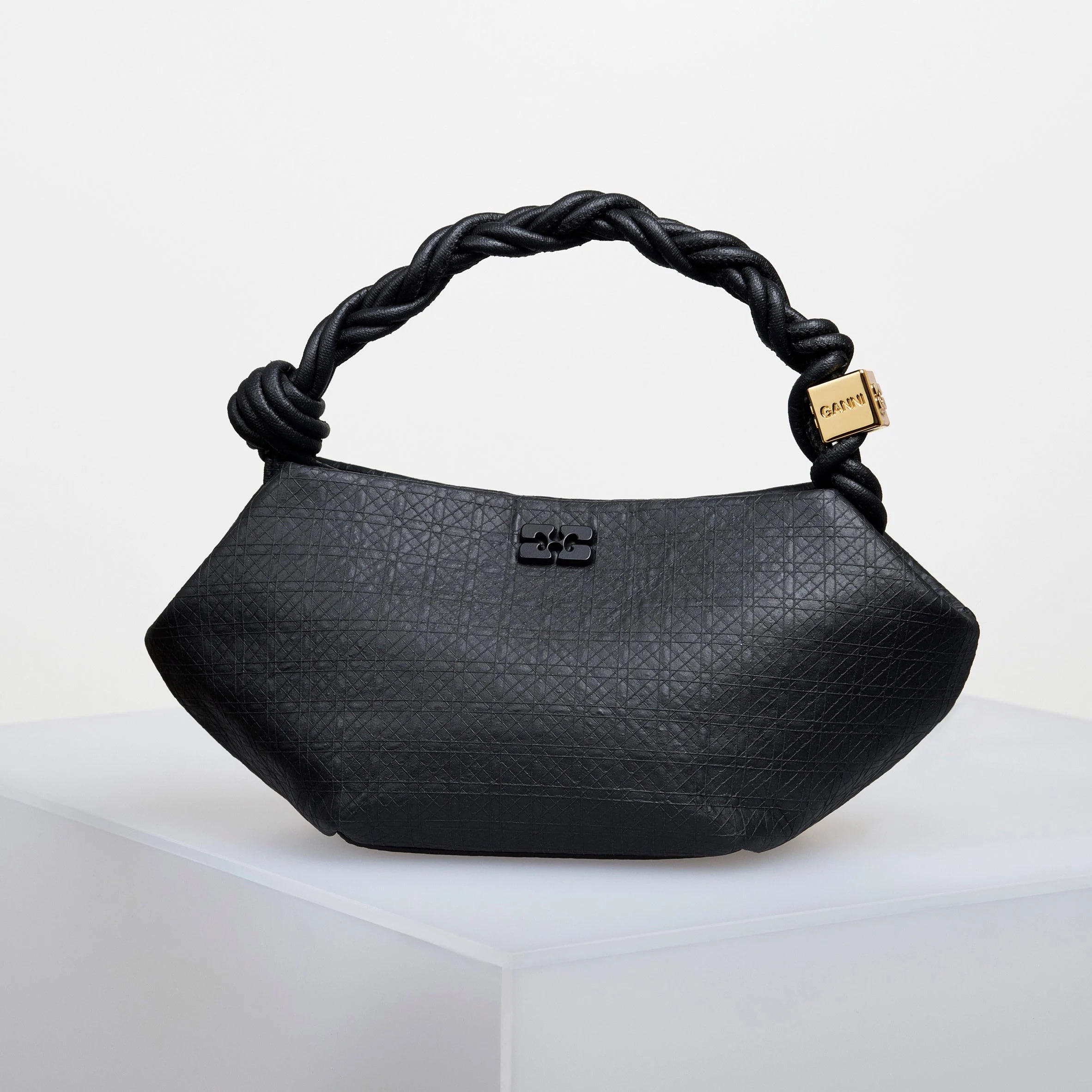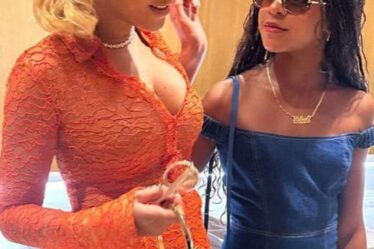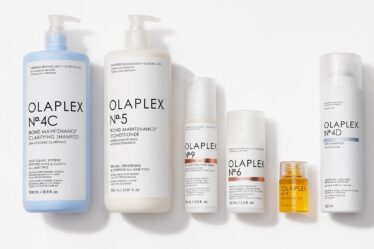
We hear from Jen Keane, co-founder and CEO of Modern Synthesis, to discuss their partnership with GANNI and the power of innovation in transitioning the industry away from energy-intensive production to lower-impact solutions.
Photo by Matt Flynn Photography
Underlining all the glamour, fancy fabrics, and people-packed supply chain, the fashion industry is widely known as one of the biggest pollutants in the world. Slowly but surely, big names start to make moves towards a greener industry, introducing not only innovations to help tackle manufacturing issues, such as waste and landfill pollutants, but also by developing alternative materials to reduce the impact of what’s still to be produced.
The Nordics take the lead in the scene, with Copenhagen Fashion Week becoming a reference in the international circuit as a place to highlight and empower environment-focused brands and initiatives — a movement that has been led and championed by the Danish powerhouse GANNI for years now.
In the last months of 2023, GANNI partnered with the London-based biotech company Modern Synthesis to develop a one-off edition of its iconic Bou Bag made from bacterial nanocellulose, a textile that, according to them, drapes much like cowhide but could generate a significant reduction in greenhouse gas emissions when compared to real leather. Modern Synthesis was the winner of the last innovation challenge “Manufacturing Futures”, an initiative powered by fashion business networking company Fashion District, aimed at finding emerging businesses in the UK with innovative solutions to revolutionise the retail and fashion manufacturing industry for the better.
Here, we connect with Jen Keane, co-founder and CEO of Modern Synthesis, to discuss their partnership with GANNI and the power of innovation in transitioning the industry away from energy-intensive production to lower-impact solutions.

GANNI X Modern Synthesis Bou Bag
Read the full interview here…
Can you share some insights into the process of collaborating with GANNI using Modern Synthesis’ leather alternative?
I’d be happy to. It was GANNI’s reputation for taking action in sustainability and championing material innovation that initially inspired us to approach them for a collaboration. The prospect of showcasing at the London Design Festival 2023 emerged during ongoing discussions about a commercial partnership, making it an opportune time to collaborate on a one-off prototype of their iconic Bou Bag using our animal-and-plastic-free textile. The GANNI team were equally enthusiastic as it aligned perfectly with the experimental ethos of their Fabrics of the Future initiative.
Creating the bag was a very iterative process and we needed to establish a strong feedback loop with the GANNI team from the beginning. We entered a period of rapid testing and prototyping to ensure our material met the requirements for this product specifically, both in terms of how it looked but also how it behaved. Our process is adaptable, so we can tailor the properties of the finished material at various stages of its formation, and we worked closely with the team to identify the right material parameters for each part of the product.
What inspired the development of your alternative leather in the first place?
I became aware of fashion’s material crisis while working in the sportswear industry, where I first learned about the colossal impact of textile production. The leather supply chain is one of the biggest offenders, with its significant contributions to GHG emissions as well as the toxic pollution resulting from tanning processes. There is an urgent need for animal-free leather alternatives in fashion, however, most of the ‘vegan leathers’ that you hear about are essentially just plastic, which isn’t fully solving the problem either.
I first learned about the potential of biomaterials to help solve this problem, when I met my Co-Founder, Ben Reeve, while studying my MA in London at Central Saint Martins. Ben, a bioengineer out of Imperial College, was working with a type of bacteria (called K.Rhaeticus) that produces nanocellulose, a natural material with a uniquely strong and versatile structure. I began experimenting with this material and successfully grew the upper of an athletic shoe to show the potential of these materials to not only displace more harmful materials like leather, but to help us rethink our approach to designing products altogether.
At Modern Synthesis, we’re now able to create a wide spectrum of cellulose-based non-woven materials that include both leather-like materials and more technical-looking textiles. Not only can these materials be produced with significantly less impact on the environment, but they offer new design possibilities so we can begin to move fashion beyond the current cultural understanding of leathers.
How do you see the role of collaborations between brands like GANNI and Modern Synthesis in driving sustainability and innovation forward in fashion?
Brand-innovator partnerships are a critical step towards integrating novel technologies in the fashion supply chain. Showpieces like the GANNI Bou Bag made with our biotextile are pivotal in evaluating the workability of new materials, paving the way for their eventual integration into everyday fashion. This, in turn, attracts crucial investment in biomaterials, accelerating the transition from one-off showpieces to commercial collections.
Our collaboration also sets a precedent for other brands, inspiring them to address their material impact and accelerate progress to meet sustainability commitments. With 5% of global emissions attributed to the fashion industry’s material use (according to BCG estimates), it’s clear that incorporating innovative, lower-emitting materials into brand collections becomes a huge lever for decarbonisation efforts. This can be seen in GANNI’s elimination of virgin leather from their collection in 2023, which was helped by partnerships with material innovators.
Could you elaborate on the broader impact of initiatives like Manufacturing Futures on fostering innovation and sustainability in manufacturing industries?
Initiatives like Manufacturing Futures play a pivotal role in transitioning the industry away from energy-intensive production to lower-impact solutions. There are still many hurdles facing bio-powered technologies on their journey to full scale manufacturing. By bringing together creative minds to contribute solutions, Manufacturing Futures provides a unique and necessary platform for collaboration across the supply chain. This collaboration is essential for addressing the complex environmental challenges in the manufacturing industry, fostering the development of viable solutions that can be scaled up and adopted more widely.
What lessons have you learned from your experience with Manufacturing Futures that you believe are crucial for other startups or entrepreneurs looking to implement sustainable solutions?
At the risk of sounding like a broken record, it has underscored the importance of collaboration for me. As a start-up, at some point in the journey, you realise you can’t do everything alone. Participating in Manufacturing Futures helped open my eyes to this, as it brought Modern Synthesis into an ecosystem of like-minded innovators who are approaching the same challenges from vastly different angles. I learned that the sooner you realise that there are things you (as an entrepreneur or a company) are especially good at and that there are different things that other companies are good at, the sooner you can work out who the right collaborators are to help you solve that challenge together.
How do you balance the need for innovation and sustainability with the practical considerations of cost-effectiveness and scalability in the fashion industry?
It’s a great question and one that we are asking ourselves repeatedly as we grow as a company. Our process is designed to utilise existing raw material capacity and off-the-shelf machinery so we can scale quickly. Otherwise, we won’t unlock the full potential for positive impact that our biotechnology holds for the industry. As we scale, we can displace more and more animal leathers and plastic-based synthetic materials with our lower-impact alternatives, shifting the industry towards a more sustainable version of itself. Scaling also brings cost efficiencies so we can make sustainable materials more accessible to all, not just a few.
What are your thoughts on the future of sustainable materials and manufacturing processes in fashion, and how do you envision Modern Synthesis contributing to this evolution?
I come from a design background, so I know first-hand that for designers, the materials available today often present a choice between sustainability and creativity. I envision a future where sustainability and creativity are seamlessly integrated, facilitated by biomaterials. We contribute to this by showing it is possible to have lower-impact alternatives that are beautiful, functional and sustainable. We’ve demonstrated this already with a beautiful handbag prototype that has captured the imaginations of the industry. The next step is working closely with both brand and manufacturing partners to scale up our material production and get these products in stores.
For someone who’s not working in the fashion industry, what are some tips you’d give for us as consumers to have a more sustainable take on fashion?
There are a lot of conflicting messages out there which means it can be quite overwhelming to work out the more sustainable ways to engage with fashion. My suggestion would be to adopt a curious mindset and ask pertinent questions about the composition of your clothing. It’s not immediately obvious that a garment made from synthetic fibres is essentially just plastic, for instance. These fibres are everywhere in fashion, so taking a closer look at composition labels and opting for garments with recycled content can make a meaningful difference, as can buying secondhand where possible. It might not be possible to completely avoid them but there are also ways to mitigate their impact both during use and at the end of a garment’s life – a little bit of research goes a long way.
Additionally, considering the longevity of your clothing is vital. Synthetic or not, the more extended use you can derive from each piece, the more sustainable your fashion choices become. Recognising the importance of care and maintenance is key to responsible ownership. By being mindful of material choices and extending the lifespan of your wardrobe, we can each contribute to a movement of more conscious fashion.



